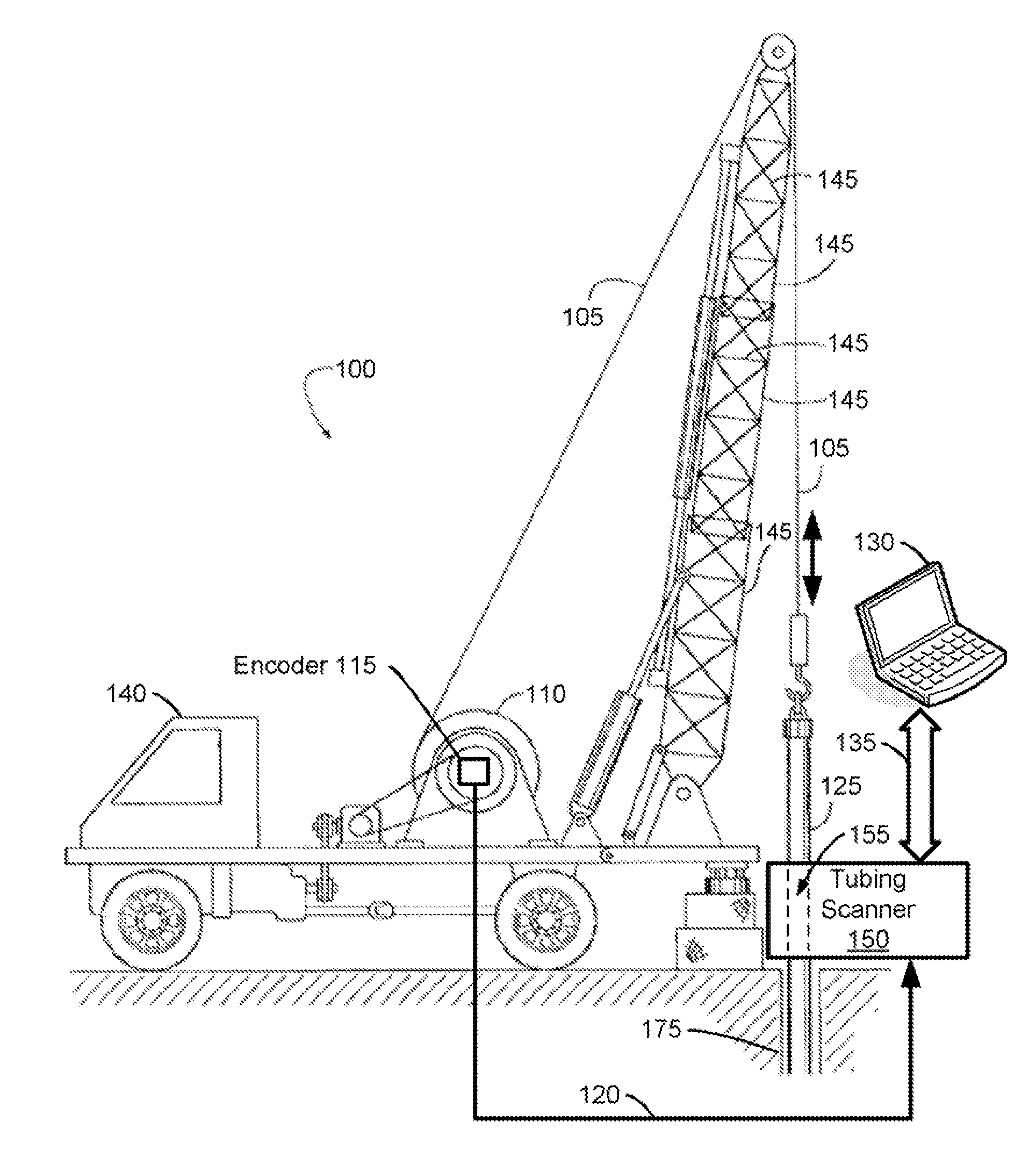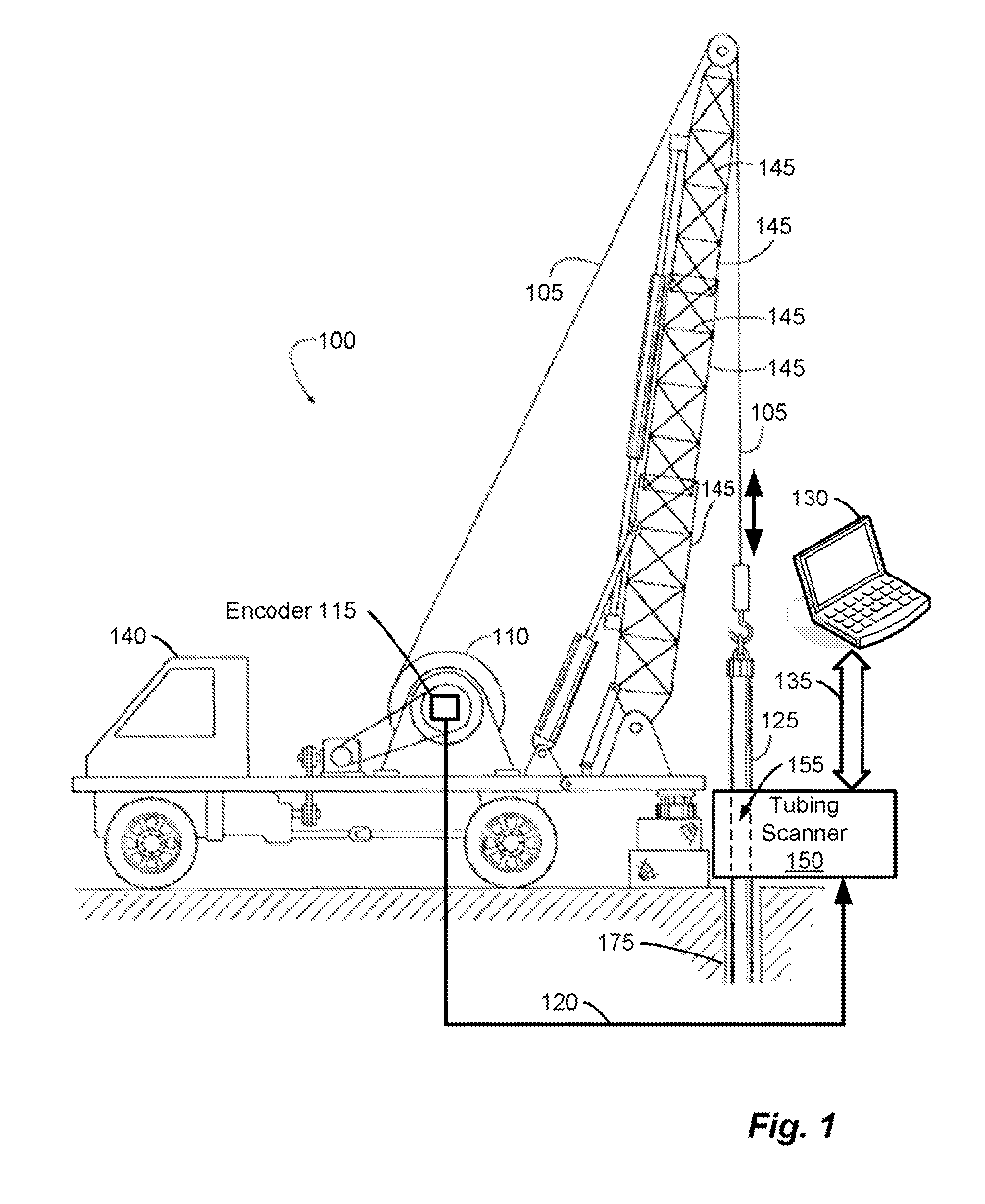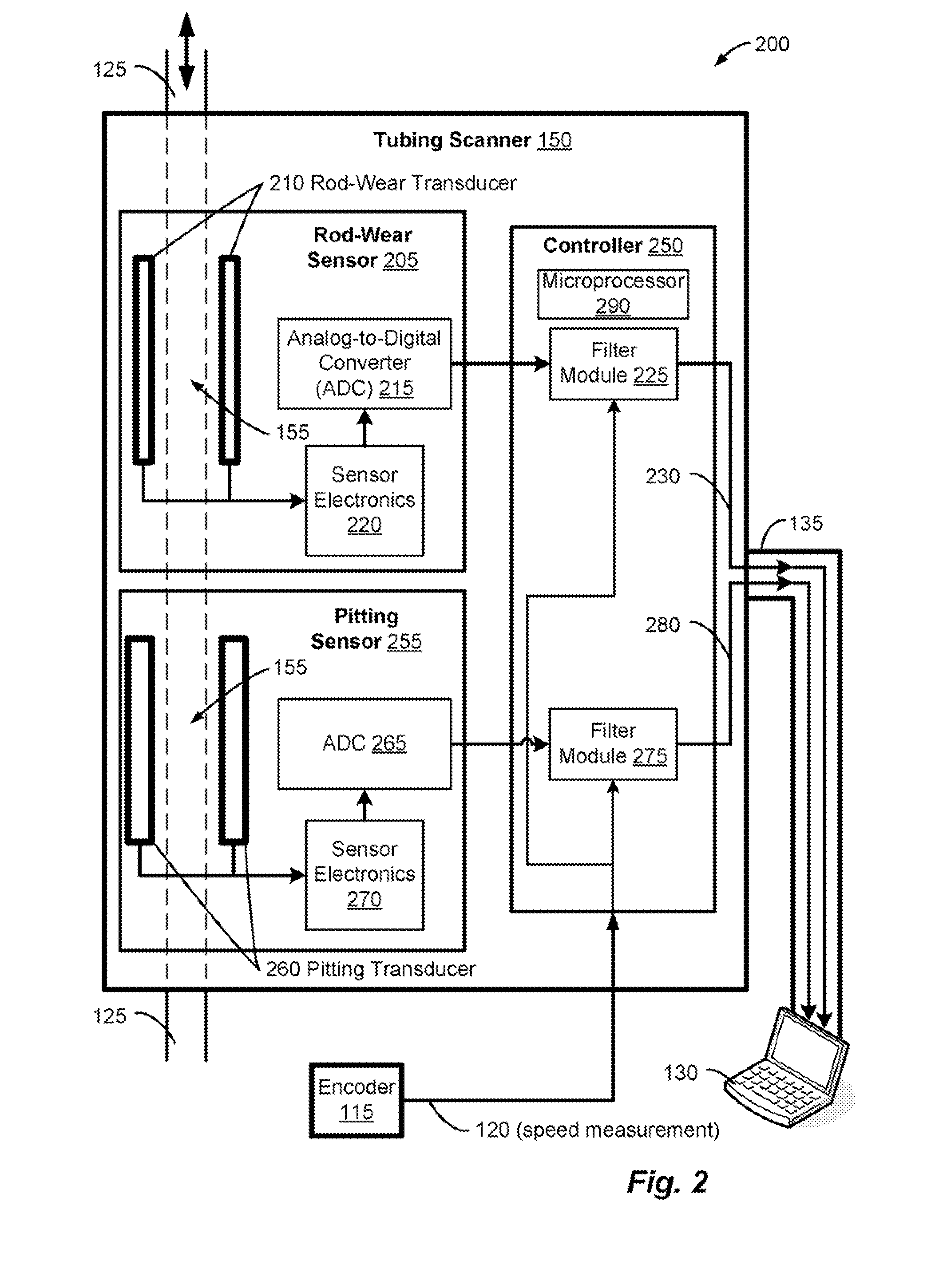Method and system for interpreting tubing data
a tubing data and data processing technology, applied in the field of processing data, can solve the problems of reducing the responsiveness of the signal, affecting the accuracy of the data,
- Summary
- Abstract
- Description
- Claims
- Application Information
AI Technical Summary
Benefits of technology
Problems solved by technology
Method used
Image
Examples
Embodiment Construction
[0045]To more adequately describe the present invention, the Detailed Description has been broken up into three sections. In Section I, the present invention supports processing information or data that describes or characterizes a tubing parameter, such as pitting, wall thickness, wall cracks, or some other indication of tubing quality or integrity. Processing the tubing data can comprise validating and / or interpreting the data. A validation procedure can evaluate whether the data is indicative of an actual tubing defect. An interpretive method can identify and / or diagnosis well conditions, such as a chemical problem or a detrimental harmonic oscillation of a reciprocating sucker rod.
[0046]In Section II, the present invention supports processing information or data that describes or characterizes a tubing parameter, such as pitting, wall thickness, wall cracks, or some other indication of tubing quality or integrity. Processing tubing data can enhance the utility, usefulness, or fi...
PUM
 Login to View More
Login to View More Abstract
Description
Claims
Application Information
 Login to View More
Login to View More - R&D
- Intellectual Property
- Life Sciences
- Materials
- Tech Scout
- Unparalleled Data Quality
- Higher Quality Content
- 60% Fewer Hallucinations
Browse by: Latest US Patents, China's latest patents, Technical Efficacy Thesaurus, Application Domain, Technology Topic, Popular Technical Reports.
© 2025 PatSnap. All rights reserved.Legal|Privacy policy|Modern Slavery Act Transparency Statement|Sitemap|About US| Contact US: help@patsnap.com



